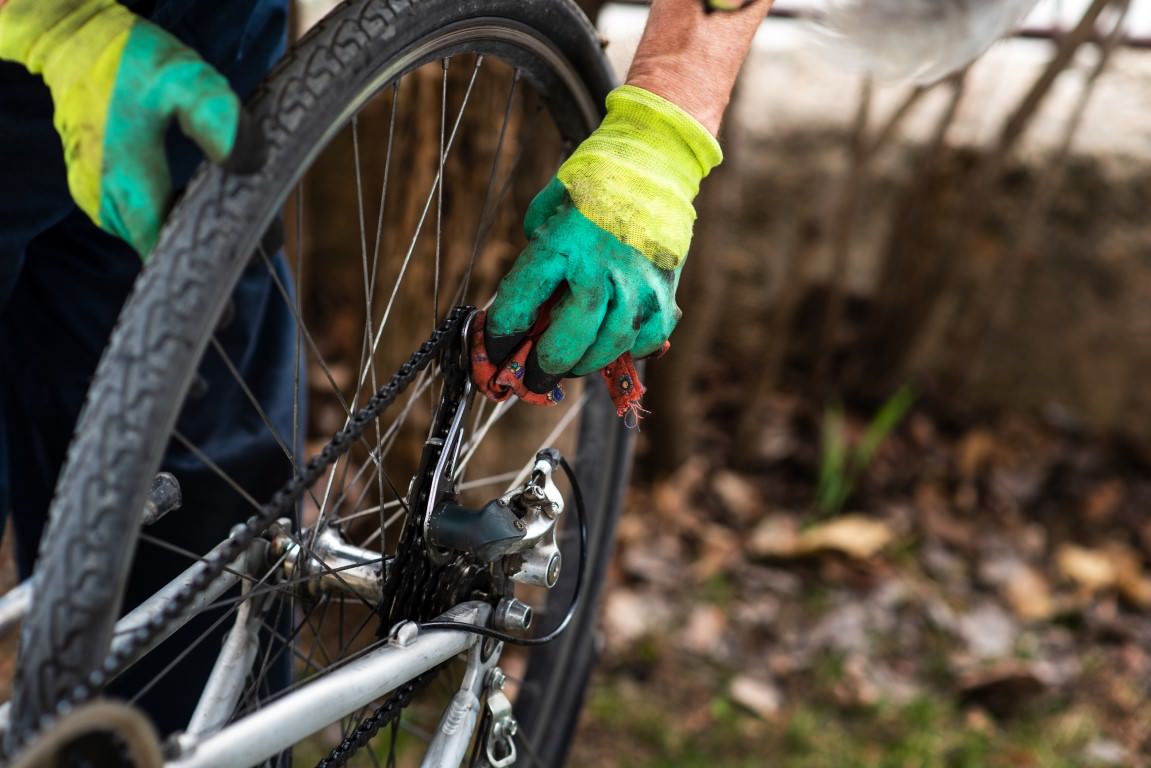Can a Homemade Bike Chain Degreaser Be Effective?
A homemade bike chain degreaser can indeed be effective for cleaning and maintaining your bicycle chain. The effectiveness of these DIY solutions often comes from the combination of ingredients used and the simplicity of the cleaning process. Let’s examine some factors contributing to the success of homemade bike chain degreasers.
Eco-friendly ingredients play a significant role in the effectiveness of a homemade bike chain degreaser. Conventional degreasers often contain harsh chemicals that can harm the environment, while DIY solutions usually consist of household items that are biodegradable and safer for the planet. Some popular eco-friendly ingredients include dish soap, distilled white vinegar, and baking soda.
Affordability is another factor in favor of homemade bike chain degreasers. Store-bought solutions may cost a pretty penny, but you can create your own degreaser using inexpensive items you likely already have in your home. This cost-effective alternative allows you to maintain your bike chain more frequently, improving its overall cleanliness and performance.
Customization of homemade bike chain degreasers allows you to cater the solution to the specific needs of your bicycle chain. Different types of riding conditions, like rain or dirt, can impact the performance of a bike chain. Experimenting with different ingredient ratios enables you to develop a tailor-made solution that works best for your specific bicycle and environment.
Following a thorough cleaning with a homemade bike chain degreaser, rinse the chain with water and dry it completely before applying a fresh lubricant coating. By addressing the factors mentioned – eco-friendliness, affordability, and customization – homemade bike chain degreasers can be highly effective in maintaining a clean and well-functioning bicycle chain.
Advantages and Disadvantages of Using a Homemade Degreaser
Homemade bike chain degreasers offer several advantages for cyclists who prefer a more DIY approach to bike maintenance. Such degreasers are often composed of easy-to-find, affordable ingredients. As a result, they prove to be cost-effective, especially compared to commercial products. Additionally, since the ingredients used are common household items, it’s easier to control the composition of the cleaner, catering to specific needs in terms of bike chain cleaning and personal preferences. Finally, homemade degreasers are more environmentally friendly, reducing the amount of harmful chemicals being washed down the drain.
On the other hand, there are also some disadvantages to using homemade degreasers. The effectiveness of these degreasers can vary, as the cleaning power depends on the chosen ingredients and their proportions. To find the right mixture for a specific bike chain, trial and error may be needed. Furthermore, commercial degreasers have undergone rigorous testing, ensuring optimal performance and compatibility with bike chains. In contrast, homemade solutions may not have gone through such tests and can potentially cause harm to the chain if not prepared properly.
While using a homemade degreaser, proper application and care are essential, as improper use can lead to an unevenly cleaned chain, reducing its lifespan. Additionally, there’s a risk of using a mixture that is too strong, which can cause the bike chain to corrode or break down the protective layers on the chain.

Which Degreaser Mixtures Are the Most Effective?
Numerous homemade bike chain degreaser mixtures can effectively clean and maintain your bike chain. Using common household ingredients, you can create a cost-effective, eco-friendly solution for your bike maintenance needs. This section will discuss three popular homemade degreaser mixtures: vinegar and water, baking soda, vinegar & ammonia, and borax, vinegar, and salt.
Vinegar and Water
Vinegar is a natural cleaning agent that can help to break down dirt and grime on your bike chain. Mix equal parts white vinegar and water into a spray bottle or container for soaking. Spray the solution onto the chain or soak it briefly, then scrub with a toothbrush or chain brush. Rinse with water to remove any remaining solution, then dry the chain thoroughly with a cloth.
Baking Soda, Vinegar & Ammonia
This powerful degreaser mixture utilizes the cleaning power of both vinegar and ammonia, while baking soda adds mild abrasiveness to help lift stubborn grime. To create this solution, combine 1/4 cup of baking soda, 1/4 cup of vinegar, and 1/4 cup of ammonia. Apply the mixture to the chain and scrub with a toothbrush or chain brush, taking care not to breathe in the fumes. Rinse thoroughly with water and dry the chain with a cloth.
Borax, Vinegar, and Salt
Borax is another natural cleaning agent that can be mixed with vinegar and salt to create an effective bike chain degreaser. Combine two tablespoons of borax, two tablespoons of vinegar, and one tablespoon of salt in a container, adding enough water to create a paste. Apply the mixture to the chain and scrub with a toothbrush or chain brush. Rinse well with water and dry the chain with a cloth.
Each of these homemade degreaser mixtures has its own benefits and may be more effective depending on the type and level of dirt or grime on your bike chain. It’s essential to always test a small and less visible area first to ensure it won’t damage your chain or other bike components. Remember to lubricate your chain after cleaning to keep it functioning smoothly and efficiently.
Creating the Perfect Mixture
When creating a homemade bike chain degreaser, finding the right ingredient ratio for an effective, safe, and easy-to-use solution is essential. This section will help you do just that while covering safety precautions and storage tips.
One popular mixture combines equal parts of distilled white vinegar, unscented dish soap, and warm water. To keep it simple, use a 1:1:1 ratio; for example, mix 1 cup of vinegar with 1 cup of unscented dish soap and 1 cup of warm water.
Vinegar works as a powerful degreaser that cuts through grease and dirt, whereas dish soap breaks down the grime, making it easier to rinse away. Here’s a simple breakdown of the mixture:
- 1 part distilled white vinegar
- 1 part unscented dish soap
- 1 part warm water
Safety Precautions
Following safety precautions is crucial when creating and using a homemade bike chain degreaser. Always wear protective gear like gloves and safety glasses, especially when working with vinegar, as it’s acidic. Furthermore, avoid inhaling the fumes and ensure you work in a well-ventilated area. Keep the mixture away from children and pets as well.
Storage
Proper storage of your homemade bike chain degreaser is essential to maintain its effectiveness and ensure safety. Store the mixture in a sturdy, airtight container and label it accordingly. Keeping the container in a cool, dry place away from direct sunlight and heat sources is best. Doing this will prevent any degradation of the solution and avoid potential hazards.
Using Your Degreaser Effectively
When it’s time to clean your bike chain, having the right tools and techniques at your disposal can make the process more efficient. Follow these steps to use your homemade degreaser effectively and prolong the life of your bike chain.
Tools You’ll Need
- A brush, such as a toothbrush or a small nylon brush
- A clean, dry cloth
- A container large enough to fully submerge your bike chain (if removing from bike)
Techniques for Degreasing
Here are some techniques to ensure you’re getting the most out of your homemade degreaser:
- Rotate the crankset to coat the entire length of the chain with degreaser.
- Use the brush to scrub the chain, concentrating on areas where dirt and grime have accumulated.
- If your chain is particularly dirty, remove it from the bike and soak it in a container filled with the degreaser for a more thorough cleaning. This allows the degreaser to penetrate deeper into the chain’s links and rollers.
- After scrubbing or soaking, use the dry cloth to wipe away the degreaser and any remaining dirt.
Choosing the Right Duration
The duration of your bike chain cleaning session will vary depending on multiple factors. Assess the condition of your bike chain beforehand and plan accordingly:
- For a lightly soiled chain, a quick scrub and wipe down should suffice.
- If your chain is moderately dirty or covered in surface grime, spend a few extra minutes using the brush and cloth to remove the dirt completely.
- When dealing with a heavily soiled chain, opt for the soaking method and allow the chain to rest in the degreaser for longer. Depending on the buildup, this may take anywhere from 30 minutes to 2 hours.
Ultimately, the effectiveness of your homemade degreaser and cleaning techniques will depend on the type of dirt or grime you’re trying to remove from your bike chain. Be patient and persistent, and your bike chain will thank you.
